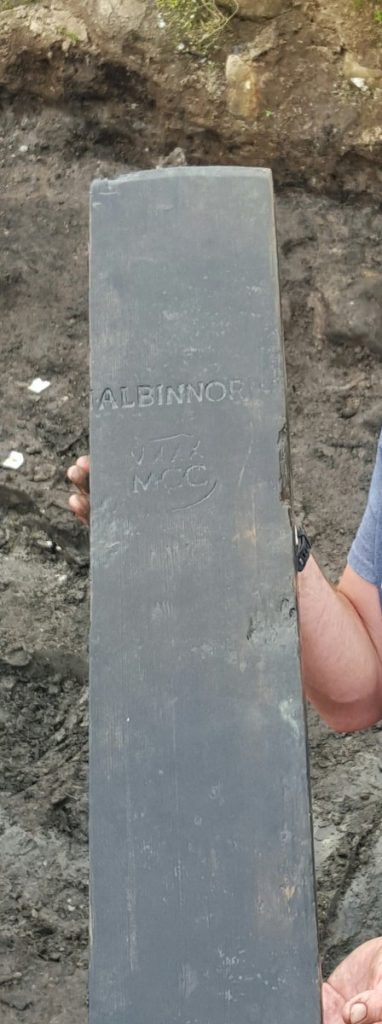
Located just to the south of Hadrian’s Wall, in northern Britain, Vindolanda was once an important Roman fort. For the last 45 years it has been subjected to a continuous series of excavations, which have uncovered many thousands of artefacts. What makes these ordinary items extraordinary is the fact they are approaching 2,000 years old, and yet many of them look as if they were discarded or lost just recently.
Dr Andrew Birley, CEO and Director of Excavations for the Trust explained
‘We know this site very well and at the start of each season there are buildings and artefacts that we hope to uncover. There are of course illusive finds that you want to make and are still searching for and then there are discoveries that make the hair on the back of your neck stand up!’
On the 16th June one of those spine tingling discoveries was made in the deep anaerobic trenches where the oxygen-free conditions enables almost perfect preservation of the ancient remains. A barrel stave, dating from circa AD 90, complete with the most vivid brand and numbers was unearthed.
The stave, made from pine and almost certainly imported from Spain bears the as yet unidentified makers brand. The numerals MCC indicate the barrel contained a quantity of 1200 but what the contents were remains a mystery.
Dr Briley went on to say:
‘the barrel stave has been one of the highlights of the season so far and we hope over the coming weeks we will know more about ALBIN – NORB as images of the stave have been sent to specialists in both Spain and here in the UK for further interpretation. However, we can guess that ALBIN could mean ALBINVS, the name of the manufacturer of the barrel, and NORB is the place of origin’.



Great find! It actually looks like there’s part of a cut-off letter immediately before ALBIN. I look forward to an analysis of the wood, which will hopefully reveal the former contents of the barrel and where the wood originated.
Could be the origin of the barrel from “Colonia Norba Caesarina” in Cáceres, Spain?